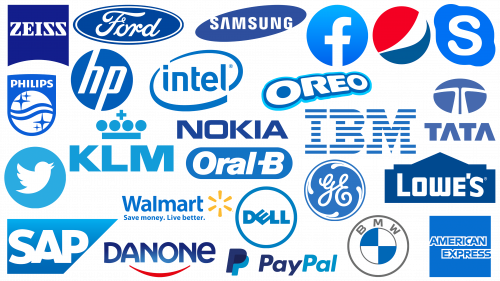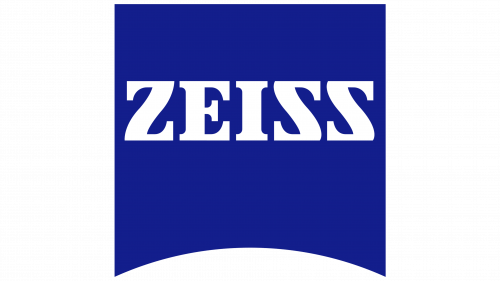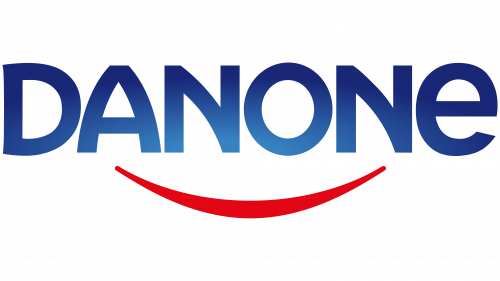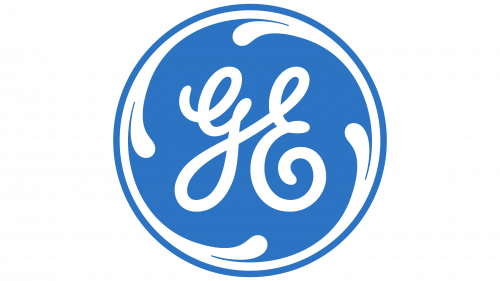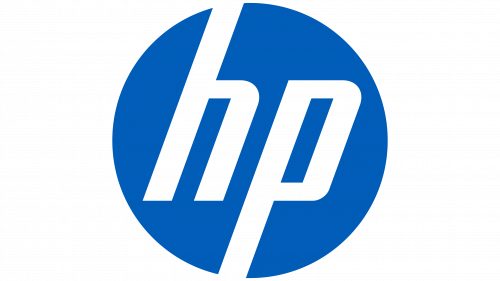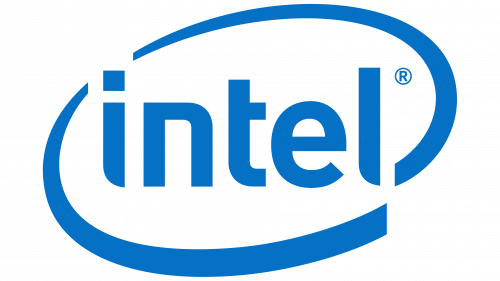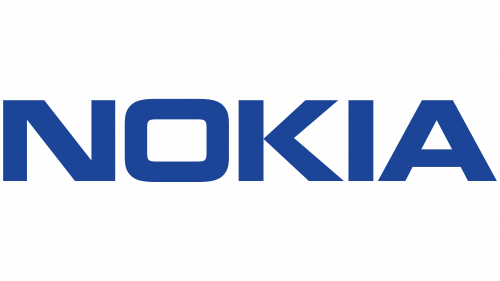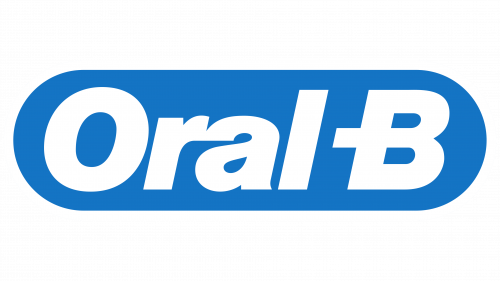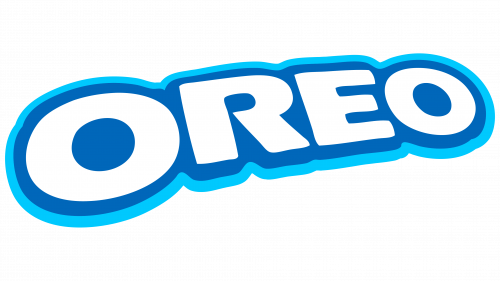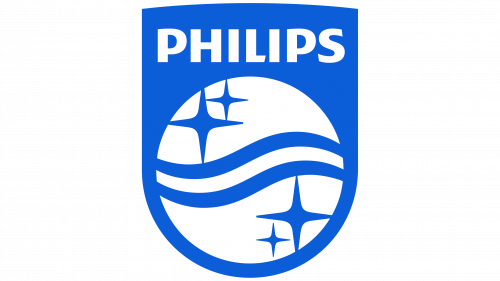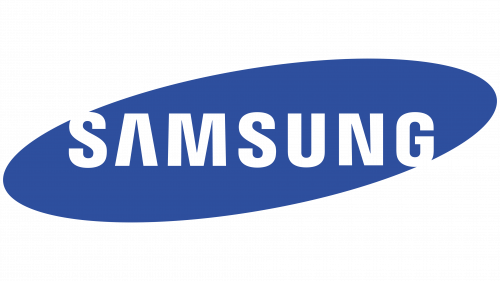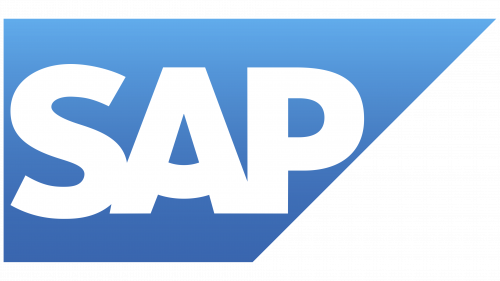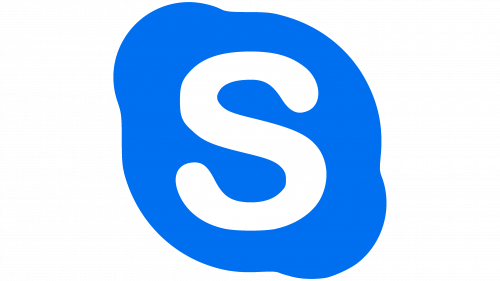Color serves as a powerful means of non-verbal communication. It evokes emotions makes you think, and even acts. A carefully chosen palette can embody a brand’s philosophy, resonate with the target audience, and stand out in a crowded marketplace.
Blue is often associated with vast expanses of color, such as the sea and sky. It is not just a hue; it carries a multitude of meanings. Blue is associated with freedom, reflecting vast horizons and open spaces. It evokes a sense of exploration, imagination, and inspiration.
If we delve deeper into the depths of the color blue, we can see that it is synonymous with trust, sincerity, and wisdom. Brands often use blue to convey stability, confidence, and reliability. It’s no wonder that many institutions, especially in the financial and technology sectors, gravitate towards this hue in their branding.
Brands do not randomly choose one color or another. Behind every choice is extensive research, market research, and a deep understanding of the psychology of color. The goal is to titillate the consumer and evoke the right feelings and perceptions.
Over time, a brand’s color becomes an integral part of its identity. It becomes a memorability factor, a distinctive element that the consumer immediately recognizes.
Blue Color Logos Of Popular Brands
The choice of color is the most important aspect of branding, often determining the perception and memory of the brand in the mind of the consumer. Choosing a hue that embodies a brand’s ethos, conveys its values, and resonates with the target audience can be a challenge.
Undeniably, the color blue holds an important place in the world of branding. With a significant portion of the American population citing blue as their favorite color, it’s no surprise that many global companies use it in their logos.
Psychologically, blue represents calmness, reliability, and trustworthiness. It evokes a sense of stability and loyalty. This can explain its widespread use among financial institutions, technology companies, and medical institutions.
Despite the pronounced dominance of blue, other colors also have pronounced psychological properties. For example:
- Red: Often associated with passion, energy, and urgency. Brands seeking dynamism may look to this color.
- Green: Symbolizes growth, nature, and prosperity. Ideal for environmentally-focused brands or companies in the financial sector.
- Yellow: Expresses optimism, clarity, and warmth. It’s a great choice for brands looking to appear friendly and approachable.
Colors have different connotations in different cultures. While blue is universally recognized, some colors evoke different emotions in different geographic regions. For example, white symbolizes purity in Western cultures, but in some Eastern traditions, it can be associated with mourning.
Once a color has been chosen, you need to ensure that it is consistent across all points of interaction with the brand. This applies to logo design as well as marketing materials and the brand’s digital presence.
American Express
Known as a financial powerhouse, American Express operates globally, catering to a variety of needs across continents. From facilitating transactions to providing a seamless travel experience, this company remains at the forefront of innovative solutions targeting individual consumers and diverse businesses.
American Express offerings go beyond traditional credit services. They include travel services, payment solutions, and comprehensive expense management. Such a wide range of services makes American Express a reliable partner, whether it is an independent traveler looking for convenience abroad or a multinational corporation optimizing its expenses.
The global reach of American Express is truly unprecedented. The company operates in many countries around the world and boasts a customer base of many millions. The broad customer reach is a testament to the company’s commitment to excellence and constant endeavor to exceed customer expectations.
The choice of blue in the company’s branding is not just an aesthetic decision. It subtly reassures customers of the company’s reliability and commitment to building long-term relationships.
BMW
Globally recognized for its classic heritage, BMW has earned a reputation not just as a car manufacturer but as the epitome of sophistication and luxury. For decades, the company has created cars of sophistication and performance, earning it a special place in the automotive world.
The widespread admiration for BMW is not limited to any particular region or demographic. On every continent, car enthusiasts and connoisseurs hold the brand in common respect. This worldwide base of passionate and dedicated users is a testament to the brand’s commitment to quality and its ability to innovate while remaining true to its heritage.
The enthusiasm surrounding BMW is truly unparalleled in the automotive sector. It’s not just about the pleasure of driving a BMW; it’s about being part of a community, a heritage. It’s the pride of owning a car that is the epitome of engineering and design excellence.
BMW’s decision to incorporate the color blue into its logo is strategic and deeply symbolic. Traditionally associated with depth, stability, and trust, blue reflects the brand’s values and its promise to users. It’s not just a color; it’s a reflection of the brand’s ethos. Just as blue stands for tranquility, depth, and reliability, BMW guarantees its customers unsurpassed quality and performance.
The alignment of BMW’s core values with the symbolism of the color blue is no accident. It is a thoughtful brand choice, ensuring that every time a person sees the iconic blue color in the logo, they are reminded of the brand’s commitment to excellence, sophistication, and heritage.
With its iconic blue color, BMW continues to be a force to be reckoned with in the automotive world. Its synthesis of operating principles, unsurpassed craftsmanship, and symbolic color choices secures its position as a leader in automotive excellence.
Carl Zeiss AG
Originating from Germany, Carl Zeiss AG is a leading company in the field of optical systems. Over the years, the company has been synonymous with precision and high-quality optics, constantly pushing the boundaries of innovation and redefining industry standards.
The company’s emblem embodies its heritage and future aspirations. The blue-colored background resembles the cross-section of an optical lens, paying homage to the company’s core business. This design choice metaphorically reflects the company’s commitment to clarity and vision.
The color blue is often associated with depth, trust, and reliability. In the case of Carl Zeiss AG, it emphasizes the company’s commitment to reliability and precision. The color blue is known worldwide for its calming properties, confirming the company’s commitment to providing clear and unobstructed vision.
Centrally positioned on a blue background, the name “Zeiss” in bold white lettering provides visibility and symbolizes the brand’s central role in the optical industry. This positioning confirms the brand’s status as an anchor in its field, unwavering and unchanging.
The logo design elements – from the blue background reminiscent of a lens to the prominently placed name – collectively illustrate the brand’s ethos. Every detail reflects the company’s journey, its relentless pursuit of excellence, and its vision for the future.
Danone
Danone’s core philosophy of “One Planet, One Health” reflects the interconnected destiny of the Earth and its inhabitants. Danone emphasizes its commitment to a holistic approach to sustainability and well-being by highlighting the relationship between environmental health and human well-being.
Blue, often synonymous with the ocean and sky, carries a sense of limitless possibilities and global interconnectedness. It evokes a sense of depth, trust, and stability, reminding us of the vast waters and wide horizons of the Earth.
For Danone, blue was not just a color choice for branding but a symbol. By adopting blue, the company linked itself to the vastness and generosity of the Earth, subtly echoing the “one planet” philosophy. It was a nod to the company’s belief in the limitless potential of a healthy planet filled with thriving people.
Blue in branding is a bastion of professionalism, reliability, and authenticity. Its universal appeal makes it a primary choice for many leading brands looking to demonstrate stability and trust. With its calm and formal style, blue can enhance an organization’s image, conveying its authority and accessibility.
Danone’s choice of blue reaffirms its commitment to global health and unity. This color is a constant reminder of the company’s mission to preserve the health of the Earth and its inhabitants. It symbolizes both the limitless possibilities offered by a healthy planet and the profound responsibility that organizations like Danone have to preserve it.
Danone’s use of the color blue in its branding masterfully embodies its mission and values. With this color, the company conveys its reverence for the Earth, reflecting the global meaning of its mantra “One Planet, One Health.”
Dell
Dell, a company synonymous with advanced computer solutions, strategically used the color blue in its logo, which has become an iconic representation of the brand on the global stage.
In business, first impressions are crucial, and logos play a key role in it. Dell’s blue logo serves as a beacon that instantly catches the attention of potential customers from all corners of the globe. The vibrant hue sets the company apart from its competitors, making it easily recognizable.
Blue is more than just aesthetics; it resonates with the brand’s core values. Blue radiates calmness, reliability, and sophistication – qualities that are perfectly aligned with Dell’s commitment to delivering first-class technology solutions.
Colors have psychological effects that can subtly influence purchasing decisions. In particular, the color blue evokes feelings of trust and reliability. By using this hue, Dell not only emphasizes the aesthetic appeal of its products but also appeals to the subconscious mind of consumers, subtly encouraging them to make an impulsive but confident purchase.
Just as the vast blue expanse of the ocean captures the imagination, Dell products with a blue theme have a mesmerizing effect. This hue gives computing devices a sleek and modern look, adding an extra appeal that appeals to tech enthusiasts and casual users alike.
Dell’s decision to use blue in its logo and products was strategically right and well thought out. It sets the brand apart in a competitive market and evokes many positive emotions and associations.
Among the myriad of social networks, Facebook stands out with its universally recognized blue logo. Facebook’s mission is to foster connections, connect diverse people, and create a global community. The platform enables countless friendships to blossom and strengthens existing ones.
Throughout history, the color blue has symbolized trust, loyalty, and reliability. These qualities are very important for a platform that deals with personal information and communication. By choosing blue for its logo, Facebook is subtly conveying a promise of reliability to its billions of users.
In addition to trust, the blue hue evokes a sense of peace and tranquility. In a digital age where information overload is a real problem, a soothing blue logo provides a visual respite, allowing users to feel calm as they navigate the platform.
That the color blue blends seamlessly with Facebook’s ethos is no mere coincidence. It’s a conscious choice to align the brand’s visual identity with its core mission. When users see the iconic blue banner, they recognize the brand and associate themselves with a platform that supports human relationships.
Ford
The automotive industry is fiercely competitive, and every brand strives to stand out from the rest. Among these giants, the emblematic blue and white Ford logo has always been a beacon of recognition. Let’s understand the deeper meanings behind the choice of Ford emblem color.
At the heart of the Ford logo is the bold choice of the color blue. This hue has historically been associated with reliability, strength, and depth. In an automotive world where reliability is paramount, the blue Ford emblem conveys the brand’s commitment to consistent quality.
Complementing the dominant blue color is a pure white hue. This color symbolizes clarity, transparency, and simplicity. Combined with blue, it underscores Ford’s ethos of straightforward business practices and a clear vision for the future.
The Ford emblem design and font are not just a choice of color but the epitome of professionalism. It conveys the brand’s long-standing heritage as a leader in the automotive industry, constantly pushing the boundaries of innovation while maintaining a sober approach.
Ford understands that buying a car is an important decision. The logo’s blue hue and design are intended to evoke a sense of trust and confidence. Buyers can feel confident in their choice, knowing that behind them is a brand that prioritizes safety and reliability.
Although the Ford logo has more than a century of heritage, its design and color schemes are timeless, attracting longtime fans and new customers alike. The Ford logo stands out not only for its design but also for the deep meaning embedded in it.
General Electric
In 1892, a watershed moment in the electric power industry occurred when Thomas Edison laid the foundation for a multinational enterprise in Boston. This enterprise came to dominate the world of electric power and wrote a significant chapter in the annals of electrical innovation.
Michael Abbink, a renowned designer, was tasked with translating the company’s heritage and future aspirations into a logo. The result was a distinctive round logo on a blue background, with blue and white bodies, which immediately made it recognizable, especially among the electrical engineering community.
If we delve deeper into the choice of blue for the logo, it becomes apparent that it is not just a color preference. Often associated with reliability, honesty, and intelligence, blue is perfectly in line with the company’s ethos. The circular shape implies a continuous cycle of progress, where the company is constantly moving forward while remaining true to its roots. It embodies the company’s commitment to constant innovation as well as respect for its rich heritage.
The logo of this multinational Boston-based company is more than just a visual representation that tells the story of the company’s journey from its inception to today’s global success. Strategic design elements and the deep symbolism of the colors chosen create a compelling image that reflects the company’s unparalleled heritage in the energy industry.
Hewlett–Packard
In the vast array of colors available for branding, the choice of blue holds a special place. This color not only attracts attention but also has a profound effect on the psyche. Hewlett-Packard (HP), a well-known company in the technology industry, has a blue logo. Examining this choice can tell us a lot about the brand’s intentions and the inherent qualities of this color.
When consumers look at a product or service, they first think about the trustworthiness of the brand behind it. The color blue is historically and psychologically linked to a sense of reliability. HP’s choice of a blue logo shows its commitment to being a trusted technology partner to its consumers.
The color blue also evokes a sense of familiarity and connection. It subtly conveys that although HP is a global company, it maintains its local roots and understands the needs of each individual market. The brand wants users to feel “at home” with its products and services.
In business, and especially in technology, stability is the most sought-after trait. Blue also conveys depth and stability, emphasizing HP’s position as a grounded and consistent brand in an ever-changing technology world.
The mention that blue is the color of choice for many government organizations is appropriate. This color is often associated with formality, stability, and integrity. This association lends additional credibility to a brand like HP, which often deals with government and large corporate contracts.
Hewlett-Packard’s blue logo is not just a design choice. It’s a strategic decision that embodies the brand’s core values and promise.
IBM
In the complex dance of branding, logos are more than just superficial designs. They are emblems that embody the core values, ethics, and unique traits of an organization, be it a government or a corporation. Just as the national flag reflects the history, spirit and identity of a country, corporate logos convey a company’s philosophy, ethics and essence.
The color blue has deep psychological and cultural significance. Historically, it is associated with the sky and the sea – vast expanses of space representing depth, stability, and infinity. On the psychological spectrum, blue evokes trust, loyalty, wisdom, and confidence.
IBM, a titan of the technology industry, is consistently recognized for its ethical practices. The choice of blue as the company logo is a thoughtful reflection of this fact. It tells stakeholders, clients, and consumers that IBM remains a constant and stable force, grounded in its ethical values despite the turbulent waters of technology.
The choice of the color blue also has universal significance. As a color, it is recognized and revered across cultures for its calmness and reliability. For a global conglomerate such as IBM, targeting different markets, this universality helps to create a unified brand image across the globe.
Intel
Intel, a renowned American information technology company, has played a key role in the IT revolution. Its contribution has significantly influenced the way society interacts with and utilizes technology.
When it comes to branding, the choice of color is crucial. One color that stands out in the color palette is blue, which is often associated with reliability, trust, and depth. This hue resonates with the vast majority of the population, especially in the United States, making it popular in a variety of industries.
The decision to use the color blue in the Intel logo was not made by chance. The popularity of the blue color and its psychological connotation play an important role in this choice. Its widespread use among the U.S. population makes it an obvious choice for companies seeking to create an atmosphere of trust and reliability.
In addition to the symbolic connotation of trust and depth, blue exudes an elegance that is both mesmerizing and calming. This combination of aesthetics and symbolism makes blue a favorite color for corporations, especially those in the technology industry, such as Intel.
Intel’s use of blue in its branding is a testament to its enduring appeal and relevance. Intel is not only catering to the preferences of its target audience but also reinforcing its position as a trusted player in the IT sector.
KLM Royal Dutch Airlines
From Amsterdam, the capital of a country famous for its canals, historic architecture, and vibrant culture, comes a renowned airline that has become the face of the Netherlands in the aviation sector. This national carrier is among the most venerable airlines still flying by air.
The regal crown rising above the letters KLM serves as a testament to the prestigious pedigree of the airline. More than just a decorative detail, this crown carries a deep connection to the country’s royal lineage.
The airline’s visual style is dominated by the color blue, symbolizing vastness, depth, and limitless skies. This hue echoes the essence of any aviation enterprise. For this airline, it reinforces its natural connection to the vast sky and epitomizes its desire to connect distant shores.
The association with the crown is not just symbolic. It has historical overtones, dating back to the time when Queen Wilhelmina granted the airline a unique status. This insignia testifies to the carrier’s high status and gives its brand a touch of royal elegance.
The airline’s emblem, a fusion of meaningful symbols and an up-to-date color palette is more than just a brand mark. It represents the company’s rich history, its connection to the Dutch royal family, and its unwavering commitment to connecting the world under the vast expanse of blue skies.
Lowe’s
The world of branding is rife with colors, each carrying its own set of emotions, associations, and meanings. Within this vast spectrum, blue is the color of choice for many brands, primarily because of its depth and the multitude of feelings it evokes.
In color psychology, blue is associated with trust, reliability, and strength. This color suggests calmness, reliability, and clarity, so it is often used by brands wanting to portray these characteristics.
Lowe’s, a well-known company in the retail industry, chose the color blue for its logo. The use of blue emphasizes Lowe’s commitment to providing genuine, sincere, and top-notch customer service.
Lowe’s places a special emphasis on empowering customers. The blue logo embodies this idea by emphasizing the company’s role as a trusted advisor and partner.
While Lowe’s main goal is to fulfill everyday primary needs, it also strives to inspire. Whether it’s a do-it-yourself project or a home renovation, the blue logo echoes the element of aspiration, motivating customers to create and achieve desired results.
For Lowe’s, consistency in service combined with the blue logo creates a sense of trust. Customers, in turn, associate the brand with reliability, knowing they can always count on top-notch service.
Choosing the color blue for the Lowe’s logo goes beyond aesthetics. By choosing this color, Lowe’s easily conveys its commitment to sincere service, customer empowerment, and consistent product delivery, making it an iconic brand in its industry.
Nokia
Hailing from picturesque Helsinki, Nokia was founded in 1865 and ushered in a new era in communications. Over the years, this venerable company has evolved, adapting to a changing technological world but still retaining its essence.
In a branding world where complexity often reigns supreme, the Nokia emblem stands out for its simplicity. The stark blue background, evoking clarity and trust, is emphasized by the brand name in bold white letters.
In the vast spectrum of colors, blue often signifies reliability, strength, and depth. Nokia’s choice of blue embodies these qualities, emphasizing the company’s continued commitment to its users and innovation in mobile communications.
The use of capital letters in the logo is not an accidental choice. It demonstrates Nokia’s confidence in its offerings and its importance in the mobile communications industry. This typography conveys the brand’s authority for decades.
In its refined simplicity, the Nokia logo symbolizes its heritage and forward-looking vision. The interplay of color and typography creates an image of a confident and grounded brand, reflecting its rich past and aspiration for the future in the dynamic world of mobile technology.
Oral-B
In the realm of brand colors, each hue carries certain connotations that influence consumer perceptions. Blue is often chosen by brands looking to emphasize reliability and safety.
Oral B is not just a facial care brand. Its specialty is the production of products that protect against oral infections and ensure optimal oral hygiene. The product range includes various oral cleaning products, among which the toothbrush holds a special place.
The decision to choose blue for its products is due to the psychology of the color. Blue is often seen as a symbol of safety, stability, and reliability, and with Oral B’s focus on oral care – protecting the mouth from potential threats such as germs and infections – the choice of blue fits seamlessly with the brand message.
When consumers see the color blue on Oral B products, they subtly but effectively remind themselves of the brand promise: reliable protection against oral problems. For a brand like Oral B that emphasizes protection and care, the choice of blue is quite appropriate and in line with universal sentiment.
Other brands may use blue in their palette, but Oral B’s use of the shade is different. The use of blue in Oral-B’s branding is a design decision that aligns the brand’s core values with consumer perceptions.
Oreo
Few can claim as much cult status as Oreo in the pantheon of favorite snacks. Not just a cookie but a cultural phenomenon, the Oreo has transcended the role of confectionery to become an emblem of shared moments and treasured memories.
Behind the tantalizing layers of crispy cookies and luxurious cream filling is a product steeped in tradition and nostalgia. Oreo is as much about the ingredients as it is about the experience. Its presence in the American market is undeniable, making it a household favorite treat and a testament to its enduring appeal.
While many snacks can make a statement about their taste and quality, Oreo stands out for its ability to make connections. It’s not just eaten – it’s an activity, a ritual. Curling, licking, dipping – enjoying Oreo becomes a communal endeavor. Families and friends come together in the enjoyment of eating these cookies.
Whether it’s a casual get-together, a family celebration, or a spontaneous get-together, the presence of Oreo invariably enhances the joy of the occasion. It’s not just enjoying a snack; it deepens the bonds that bind people together. Eating Oreo cookies together evokes a sense of camaraderie and shared delight.
Over the years, Oreo has not just appeared on supermarket shelves. It has become a silent witness to countless moments of togetherness, laughter, and joy. Its distinctive flavor and unique manner of eating make it an integral part of many cherished memories.
PayPal
PayPal, as a global digital payment platform, prioritizes user trust and transparency. Its business model is based on seamless and transparent transactions, allowing users around the world to transfer and receive money with confidence.
Choosing blue for branding was a strategic decision by PayPal. This color reflects the platform’s commitment to open, clear, and secure transactions. This alignment of brand values with visual representation reinforces PayPal’s promise to a broad user base. To customers who see the blue logo, it reminds them of the platform’s commitment to transparent transactions.
Consistency in branding is crucial to recognizing and building customer trust. By maintaining a blue theme throughout its platform and promotions, PayPal reinforces its message of trustworthiness. Over time, this visual consistency combined with the effectiveness of the platform solidifies a sense of trust in the minds of users.
While the blue hue is symbolic, the real essence of PayPal lies in its unwavering commitment to providing secure and transparent digital transactions. The choice of color complements this commitment, and the platform’s operational integrity resonates with users.
Pepsi
Pepsi, known globally as a leading food and beverage company, has made its mark in the annals of soft drink history. Over the decades, it has carved a niche for itself, mainly due to the uniqueness of its flavor profile.
Colors play a key role in shaping consumer perception of brands. They evoke emotions, trigger memories, and influence choices. Blue, in particular, is often associated with depth, stability, and reliability. Pepsi’s choice of blue as the dominant brand color is not accidental or merely aesthetic. The blue emblem embodies the company’s ethos of bringing people together. For a global brand like Pepsi, this symbolism underscores its broad reach and mission to cater to diverse tastes across continents. Pepsi’s strategic choice of blue as the brand’s primary color reflects its broader goals and ethics.
Philips
Emerging from the picturesque Dutch landscape in 1891, Philips has carved a niche for itself in the annals of technological advancement. As an international giant in the field of consumer electronics, the brand is well-positioned among its peers and boasts a legacy on every continent.
At the center of the emblem are two intertwining blue waves. These waves are more than just an aesthetic addition; they are deeply connected to Philips’ pioneering path. At the forefront of radio transmission, these waves symbolically capture the essence of their pioneering efforts in this field.
The blue waves depict a defining circle, which at first glance may seem simple. However, it holds a profound meaning. Representing the planet Earth, the circle delineates the vast area of Philips’ operations. It shows that the brand’s influence is not limited to one region but covers the entire globe.
The choice of the Philips blue color serves as a reminder of the company’s unwavering commitment to excellence and its key role in shaping the electronics industry.
The Philips logo is more than just a visual name for the company. It is a symbolic embodiment of its rich history. Every element, from the waves to the circle, communicates the company’s innovation, history, and continued uniqueness to its global consumers.
Samsung
Emerging from the heart of South Korea, Samsung is a colossus of global electronics. This multinational corporation has earned its name through the constant release of innovative products and services.
Among the many logos that have flooded the international market, the blue oval of Samsung occupies a unique place. Its popularity is not only due to its association with the famous brand but also due to its inherent design elements that speak to its ethos.
Blue is a color often associated with trust and embodies the brand’s core principles. By using this hue in its logo, Samsung shows its commitment to product quality and service and creates long-term relationships with consumers.
The capital white letters are a thoughtful choice that emphasizes the brand’s strength and leadership in electronics. This typography provides clear legibility on a blue background.
The unique slanted oval design is not just a stylistic decision. This slant is perceived as Samsung’s desire to always be ahead, leading rather than following.
The Samsung logo is more than just a brand identifier; it reflects its core values and aspirations. Through a balanced combination of color, typography, and design, it embodies the qualities that have propelled Samsung to the forefront of the electronics industry.
SAP
In today’s technology, SAP stands out as a unique creation. It offers unparalleled HR solutions and comprehensive ERP (Enterprise Resource Planning) services to optimize business operations.
Every innovation faces certain challenges. In its formative stage, SAP faced the challenge of recognition and acceptance. Achieving global recognition and gaining the trust of potential customers were the main challenges for the brand.
Colors have always had a deep psychological meaning. Blue, often associated with trust, stability, and depth, is widely recognized and popular in all cultures. Given the need to strengthen its global brand image, SAP made a conscious choice. The inclusion of the color blue in SAP’s branding was not arbitrary. It was a strategic move designed to emphasize SAP’s commitment to reliability and top-notch service. By using a color known for its reliability, SAP sought to emphasize its desire to offer customers reliable and durable solutions.
Skype
Skype, a leading telecommunications platform, enables multimedia communication across the globe. Leveraging the power of modern technology, it enables interaction through text, voice, and video messaging while minimizing geographical limitations.
In an era of rapid globalization and migration, the need to maintain personal and professional connections across vast distances has never been greater. Skype makes this role easy by offering a virtual bridge that brings people closer together, no matter how many kilometers separate them.
Color plays an important role in shaping quality and brand perception. Blue, the dominant color in Skype’s branding, carries connotations of trust, reliability, and open communication. The widespread association of this color with the expanse of the sky and the depths of the ocean further shows its boundlessness and connection.
Skype’s branding is a thoughtful combination of core purpose and visual representation. The blue color palette serves not only aesthetic purposes but also reflects the platform’s commitment to break communication barriers and bring the world closer together, one conversation at a time.
Tata Sons
The Tata Group has left its mark in India and across Asia. Its rich heritage of over a hundred years since its inception in 1868 has given it a place of honor amongst business conglomerates.
While the Tata Group’s roots are deeply rooted in Indian soil, its subsidiaries have spread across the globe. Its multifaceted operations and diverse business ventures make it evident that Tata is not just a business empire but a global phenomenon.
The emblem is in blue colors and embodies the core values and corporate ethos of the group. It is not just a design; it is an expression of the brand’s vision and mission.
The blue color of the logo remains consistent across all Tata divisions, reinforcing a unified corporate identity. This uniformity emphasizes the holistic approach of the group and the synergy between the various sectors under the Tata umbrella.
The universal acceptance of the logo is a testimony to Tata’s impeccable reputation in the corporate world. The Tata Group logo in its simplicity and elegance, reflects the conglomerate’s journey from a national entity to a global powerhouse.
Originating from the bustling city of San Francisco, Twitter has evolved into an essential tool for digital communication. This microblogging platform has not only changed the way information is disseminated but has also shaped the global world of social networking.
Twitter’s emblem, a silhouette of a bird taking off into the sky, symbolizes the platform’s aspirations. The upward flight signifies the spread of ideas, conversations, and news that instantly appear on this platform.
The bird is named “Larry,” a reference to the celebrity of American basketball. This unique association gives the logo cultural relevance by intertwining sports, celebrity, and digital communication.
The choice of a sky-blue hue for Larry is no accident. In the context of Twitter, it reflects the vast expanse of the digital sky where ideas fly, resonate, and have an impact.
Larry’s bird has distinctive design features: a slightly denser build and an extra wing on the back. These elements give the logo its uniqueness, differentiating it from typical bird symbols.
Today, Twitter is a global center for real-time news, debate, and public discussion. Larry’s silhouette has become synonymous with instant information sharing and digital communication.
With its iconic sky-blue bird, Twitter has become a force to be reckoned with in the digital age.
Walmart
Often referred to as the “king of retail,” Walmart has a prominent position in the global market. Its operations span multiple continents and touch the lives of a huge number of consumers. Its journey – a beacon of retail success – is an exemplary story of growth and an unwavering desire for customer service.
Rooted in an ethic of value-based shopping, Walmart’s growth has been nothing short of meteoric. Over the decades, the company has expanded its reach, diversified its product offerings, and ventured into new territories while maintaining its core values. This commitment to consumer needs and preferences has underpinned the company’s vertical growth and strengthened its position in the retail sector.
Many competitors have come and gone, but Walmart has managed to maintain and grow its large consumer base. This resilience is a testament to the brand’s adaptability and deep understanding of market dynamics.
The perception of Walmart as a symbol of royalty, elegance, and loyalty is not accidental. It has been shaped by consistent quality, affordability, and service. When consumers think of Walmart, they envision a trusted partner that has been part of their shopping journey for years, if not decades.
The color blue reflects the character of the Walmart brand. It’s not just a color choice; it’s a statement. It echoes the brand’s reputation for reliability and the high standards it sets in the retail industry. Just as the color blue evokes a sense of calm and confidence, Walmart strives to instill a sense of trust and confidence in its consumers.
